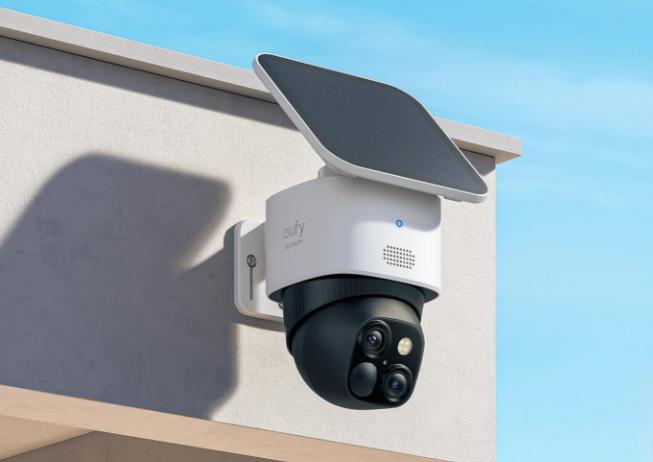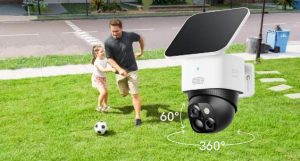Choosing the right mounting position for your PTZ security camera is essential for achieving the best possible surveillance. Proper placement guarantees enhanced coverage, effective tracking, and clearer footage in various conditions. Whether it’s for a home, business, or public space, understanding how to strategically position your camera maximizes its performance. This guide will explore crucial factors influencing camera placement, ideal locations, technical setup tips, and practical applications for optimal security.
Factors That Influence PTZ Camera Placement
Field of View and Coverage Range
The field of view and coverage range of PTZ cameras are key factors in their placement. Positioning the camera correctly ensures its high-definition panoramic capabilities are fully utilized. When selecting the right location, evaluate the area size and determine the best spots to monitor. Positioning the camera to target key zones within its range maximizes effectiveness, allowing you to capture every crucial detail for enhanced surveillance.
Height and Angle Considerations
The height and angle at which you mount the PTZ camera will directly impact its ability to capture comprehensive footage. Mounting cameras higher up reduces the risk of tampering and enhances overall coverage. Choosing the correct angle ensures that the camera can capture a broader area, minimizing any blind spots. Balancing the height and angle is crucial to maximize both resolution and coverage area for effective surveillance.
Lighting and Environmental Impact
Lighting and environmental factors play an essential role in the effectiveness of PTZ cameras. Ensure cameras are placed in well-lit areas to guarantee clear day and night footage. When setting up cameras outdoors, consider weatherproof enclosures to protect them from harsh elements like rain or snow. Additionally, infrared capabilities ensure the camera functions optimally during low-light conditions, making it more reliable across diverse environmental settings.
Recommended Mounting Locations
Eaves and Ceiling Mounts for Wide Coverage
Eaves and ceiling mounts are ideal for PTZ cameras seeking to provide expansive coverage. This overhead placement ensures the camera can monitor large areas, like indoor lobbies or vast outdoor spaces. With its 360-degree rotation ability, the camera can scan an entire area, eliminating blind spots. Ceiling mounts also provide elevated positioning, enhancing the security system by covering multiple angles simultaneously with fewer cameras.
Corner Positions to Minimize Blind Zones
Installing PTZ cameras in corners can significantly reduce blind zones by allowing overlapping views. This strategic placement is perfect for indoor environments, where the camera can cover more ground. By positioning the camera at an angle, it ensures maximum visibility of key areas like hallways, aisles, or entrances. The corner placement also aids in covering areas that may otherwise be missed by fixed-position cameras, increasing overall security.
Pole or Wall Mounts in Outdoor Areas
For outdoor applications, pole or wall mounts elevate PTZ cameras to provide optimal coverage of expansive areas like parking lots or parks. These mounts offer a stable, elevated vantage point to oversee larger spaces effectively. The durability of pole or wall supports ensures that cameras remain firmly in place, resisting strong winds or storms. Proper mounting can also ensure cameras stay at a height where they are less prone to tampering or vandalism.
Technical Setup and Positioning Tips
Adjusting Tilt and Pan Limits for Optimal View
Adjusting tilt and pan limits is crucial to ensure PTZ cameras capture the best view possible. By configuring movement limits, you can ensure the camera focuses on key areas that require surveillance, such as entry points or vulnerable spots. Proper adjustments also enhance the camera’s ability to track moving objects and improve real-time responses. This precision increases the camera’s overall coverage and reduces unnecessary monitoring of non-crucial areas.
Ensuring Clear Line-of-Sight and Avoiding Obstructions
Ensuring a clear line-of-sight is critical to maintain effective camera functionality. Cameras should be positioned free from obstructions like trees, fences, or architectural features that could block the camera’s view. A clear view improves motion detection and tracking, allowing the camera to capture more accurate footage. Ensuring visibility will help maximize the camera’s ability to monitor key areas without interference or blind spots.
Cable Routing, Power Supply, and Connectivity
Proper cable routing and power supply are essential for ensuring PTZ cameras remain functional. Discreet, secure cable management prevents tampering and minimizes clutter. Using Power over Ethernet (PoE) cables can simplify the installation process by delivering both power and data through a single cable. Ensure stable connectivity to guarantee uninterrupted live feeds and reliable remote access, which is essential for continuous surveillance.
Real-World Use Scenarios and Sample Layouts
Home Property: Driveways, Backyards, Entrances
For home security, PTZ cameras should be placed at entrances, driveways, and backyards to monitor high-traffic areas. This placement allows coverage of the main entry points to the property, deterring intruders and alerting homeowners of unusual activity. Customizing the camera’s settings for each location enhances security, making it easier to spot unauthorized access, suspicious individuals, or vehicles approaching the home.
Business Premises: Storefronts, Parking Areas, Perimeters
In business environments, PTZ cameras are invaluable for monitoring storefronts, parking lots, and perimeter fences. Placing cameras at these strategic points offers a comprehensive view of the business property, improving both asset protection and employee safety. With the ability to zoom in on specific areas, PTZ cameras can monitor customer interactions and high-risk spots, offering peace of mind and security for businesses.
Public Spaces: Park Areas, Community Centers, Transit Zones
For public spaces like parks, community centers, or transit zones, PTZ cameras should be mounted at elevated positions for better coverage. This enables the surveillance of large crowds or busy areas, where events can unfold quickly. Such camera placement also helps law enforcement or security personnel quickly identify and respond to potential incidents, enhancing public safety. It creates a visible deterrent while ensuring all areas are monitored efficiently.
Conclusion
Properly mounting PTZ cameras plays a critical role in enhancing surveillance effectiveness. By strategically considering factors like field of view, height, and environmental conditions, you can ensure that your cameras cover every corner of your space. Whether it’s for residential, business, or public environments, selecting optimal mounting positions helps maximize your security system’s efficiency. Ensuring proper placement provides thorough surveillance and peace of mind, safeguarding your property and loved ones effectively.

Oliver Smith is an experienced blogger at Grammar Globe, Oliver Smith, an expert in English grammar and a master of wit, brings language to life with his playful take on puns. Through his works, he weaves humor into the rules of grammar, making learning fun and engaging for readers of all ages. Discover language with a smile!”







